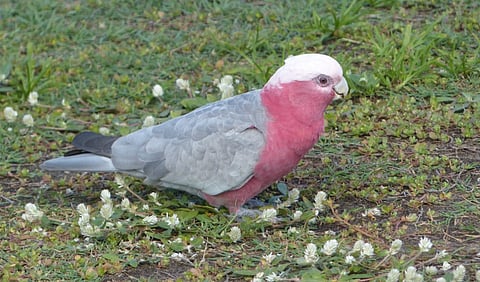

This is a true story about a sea-going parrot. His name was Rocky and he sailed on the ANL's Yarra River on the Weipa to Gladstone run in the 1970s. Never one to ruffle feathers, he was a great social asset and mostly got along well with all the crew with a few exceptions.
Animals have always been at sea. They generally fall into one of four categories: cargo, victuals, pests and pets. Rocky was part of the last category.
Early sailing ships carried live chickens, goats, pigs and other oxygen-breathing victuals which were gradually consumed as the voyage progressed.
As far as pests were concerned, the top of the list would have to be rats. As their name suggests they weren't very loyal, they made short work of rope, woodwork, foodstuffs and electrical cables and of course, if the ship was sinking, they'd be the first ones off. I often see rat guards on ships' mooring lines and wonder if they're intended to keep the rats off or to prevent them from leaving.
Of course, the ship's cat always played a major role in seaboard life primarily to dispense with the rodent population but they were invariably spoilt by the crew to the point that the rats flourished. There were some famous sea-going cats. There was Matthew Flinders' cat, Trim, who was the first of his species to circumnavigate Australia. Then there was Togo who served on the HMS Dreadnought. His favourite resting place was in the barrels of the ship's main battery. He was a fine calibre of a cat and he could move very quickly when he heard the gunnery crews approaching.
There was Tiddles who only served only on aircraft carriers travelling some 30,000 miles on HMS Victorious and HMS Argus. "Able Seacat" Simon served on the HMS Amethyst. He was posthumously awarded the Dickin Medal (the animal's Victoria Cross) for gallantry under fire and the disposal of many rats despite shrapnel injuries sustained during the Yangtze Incident. The only cat to receive the award, he was buried at sea with full naval honours.
But probably the most famous ship's cat was one originally called Oscar but eventually was renamed Unsinkable Sam. This bilingual creature first served on the German battleship Bismarck. He survived the sinking (one down and eight to go) and joined the HMS Cossack, one of the ships that sank the Bismarck. A few months later the HMS Cossack was torpedoed and sunk but again Sam survived (two down, seven to go). Finally, he joined the HMS Ark Royal only to be torpedoed and again sunk in late 1941.
Fearful of losing any more ships the Royal Navy transferred him to a shore posting as chief mouse catcher for the Governor General of Gibraltar. Sam died of old age still with six lives up his furry sleeve. His portrait proudly hangs in the National Maritime Museum at Greenwich.
Dogs get a mention too. Captain Richard Woodget, the hard driving skipper of the famous Cutty Sark, bred collie dogs as a hobby. He always had several on board with him on his famous round the world wool clipper voyages. These dogs were further living proof that the world is round.
But getting back to Rocky and Yarra River. The Gladstone to Weipa voyage passage was a dream run. Inside the Great Barrier Reef all the way, balmy warm nights and smooth seas, tropical north Queensland on one side and beautiful coral cays on the other.
Rocky the Cocky was a galah. He had his own position in the officer's smoke room, perched there all-day awaiting company in the evening. He was a very social bird with fixed habits. One of his endearing traits was to walk along the bar and pick up beer cans with his beak. If they were partially full, they would be left in place; if they were empty Rocky would carry them to the end of the bar and drop them in the bin.
His pet hate was any officer entering the smoke room inappropriately dressed, in particular persons in sandals or thongs (usually engineers!). Rocky would stealthily drop to the deck and attack the bare feet of the offender. A hard-learned lesson never repeated by the person involved. I'm not sure if Rocky had the power of speech but he certainly heard some colourful language at times, particularly from the wearers of sandals.
Unfortunately, Rocky's adventurous spirit was his downfall. One day when the outside door was left open, Rocky decided it was time to stretch his wings. He went out for a fly around the ship but his indoor stamina let him down. He couldn't keep up with the ship and had to head for land.
I understand galahs live to a great age. Rocky headed for north Queensland's tropical coast. This was in the mid 1970s. That would make him about 45 now, not so old in parrot years but certainly he'd be more grey than pink now.
So, if you're ever up Cooktown way and your bare feet are attacked by an angry parrot, you'll know the full story.
Submissions wanted! Do you have an exciting, amusing or downright dangerous anecdote from your time in the maritime world? Each week, we will feature new personal experiences from across the globe. Submissions to: marinfo@baird.com.au.
